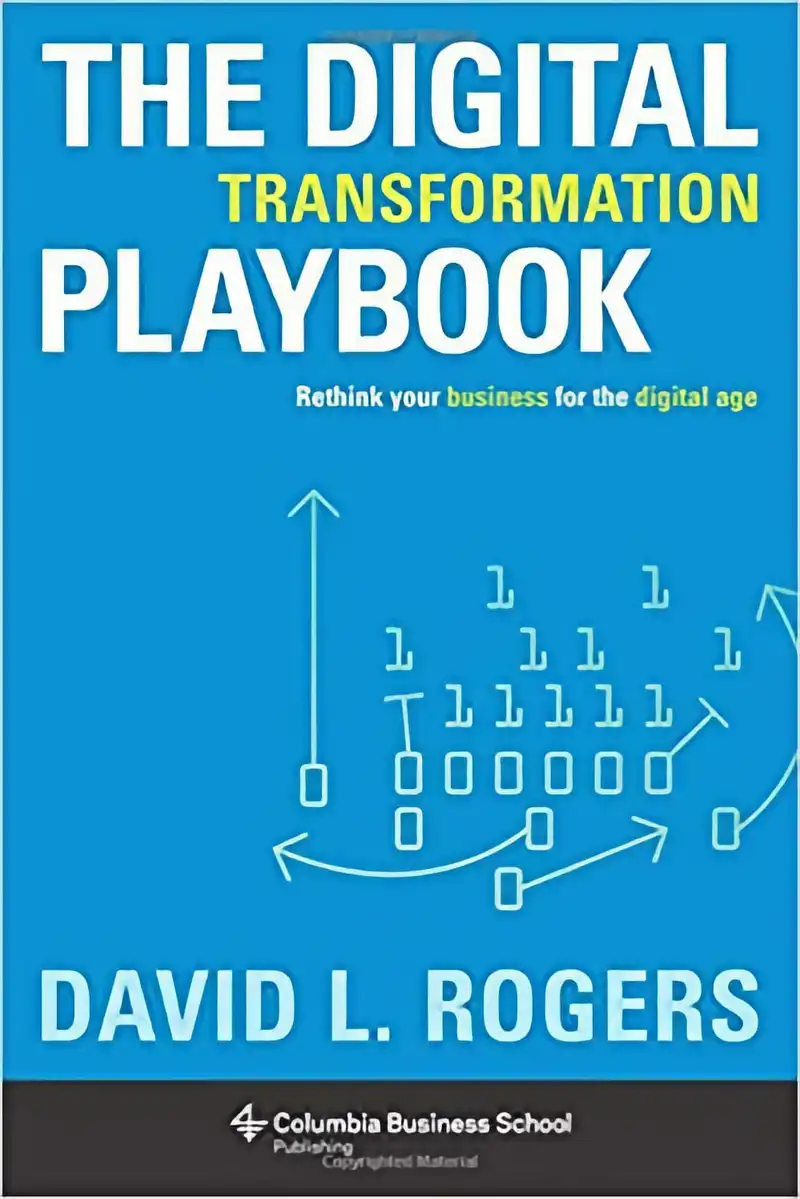As a company that helps businesses digitalise, we have noticed an increasing trend. Gone are the days businesses ask, “do I need to digitise my business?”. Instead, businesses want to know “How do I transform to compete in a digital economy?”, “What is the best method of digital transformation?”, and “What do I need to consider in the process of digital transformation, to achieve long-term success?”.
A friend recently recommended reading The Digital Transformation Playbook, by David L. Rogers to help answer some of these questions. Last week I sat down to read it, and discovered how his strategies could help advise big businesses and established firms in a successful digital transformation.
“The rules of business have changed”. From the outset of his book, Rogers states a truth that every established business should now have realised - the digital revolution is here to stay. The Digital Transformation Playbook highlights the necessity for established firms and big businesses to transform their old business strategies, or risk becoming a ‘dinosaur’ on the face of extinction.
What areas of my business do I need to consider in a digital transformation?
The scope of Rogers’ book covers five domains of business strategy - customers, competition, data, innovation, and value.
Exploring each of these business domains, we can observe how technology has shifted the rules in each of these areas. For example, he discusses how business strategies for dealing with competition have been redefined and moved to a concept of fluid industry boundaries and asymmetric competitors.
The five domains can be summarised as follows:
1. Customers
Businesses are shifting away from mass production and marketing, to a ‘customer network’ where the strongest purchase influence comes from the customers themselves. Rogers discusses methods to connect and harness these customer networks.
2. Competition
This business strategy has moved to one of fluid industry boundaries and asymmetric competitors. His strategy for dealing with this paradigm is to focus on building platforms, not just products.
An interesting example he looks at is Hulu - the streaming company that is a conglomeration of rival television networks (ABC, NBC, and Fox) who have teamed up to compete against new digital competitors like Netflix and Amazon. Without the rival television networks being open to adapting in this changing competitive landscape, they quickly would have been eaten for dinner by the growing market of online streaming services.
3. Data
This new area of business strategy is rapidly growing in value. As Rogers states, “every business now has access to a river of unstructured data”. How you utilise this information is extremely important in the digital revolution.
4. Innovation
The digital revolution is giving us better access to customer feedback and therefore pushing businesses to innovate better and more frequently. Rogers discusses why we must now innovate by rapid experimentation.
Rogers identifies innovation as an important consideration for the digital roadmap of every business, primarily because the digital age has given us infinitely better access to customer feedback. With the opportunity there, it is important that businesses push to utilise this information in order to innovate better and more frequently. When digitising your business it is therefore best practice to ensure the process you choose allows for long-term rapid experimentation and growth. For example, using model-driven development to build a software application allows for easier changes and iterations to software projects.
5. Value
In an economy with continuous innovation and disruption, Rogers highlights the importance for a business to be willing to constantly shift its value proposition. The value domain centers around ensuring your business is open to the constantly changing digital landscape. The importance of a digital transformation mindset is reiterated through another example from the playbook. The company Blockbuster is an often mentioned when we consider businesses who fought the war against the digital revolution and lost. Blockbuster’s refusal to accept the changing business landscape meant they missed an opportunity to buy out the business owner of an upcoming company called Netflix.
According to Rogers, Netflix’s defeat of the massive player in the retail space was due to the company’s willingness to offer a dramatically different value proposition to the customer. They listened to consumers who were sick of late fees, and customers who wanted betteraccessibility to rent movies.
Real world digital transformation.
Reading this book I found myself observing the patterns of successful digital transformation Rogers describes, in real world scenarios. For example, when going to read The Digital Transformation Playbook, I noticed that it was only available to read through purchasing a hard copy (and waiting the ridiculous delivery time of Amazon Australia) or through Kindle (which is one of the few devices I do not own). However, in true digital transformation style, I discovered that Kindle has built an application for iPhone devices - increasing the accessibility of its product to a broader range of customers.
“Digital transformation is not about technology, it is about strategy and new ways of thinking.”
The book focuses on teaching businesses to implement not just a one-off digital transformation, but a continuous mindset of flexibility and adaptability to change with technological and business advances. This is what David refers to as a ‘holistic’ approach to digital transformation. I recognised a lot of similarities in this concept to the Codebots manifesto of continuous modernisation. This is where instead of viewing the digitisation of a service or legacy system as a project (i.e. something that can be finished), businesses learn to utilise technology to constantly innovate and improve business offerings.
It is important for businesses to be able to recognise the presence of this mindset in potential service partners during a digital transformation. Nigel Fenwick of Forrester recommends asking the company to define digital transformation, in order to determine if their response accurately recognises the opportunities and challenges associated with this term.
Who should read The Digital Transformation Playbook?
While the book is definitely more introductory to the concept of digital transformation, I appreciated that it took a fresher angle of there being “absolutely no reason upstart digital companies have to supplant established firms”. The digital technologies available today allow for established businesses to implement new processes that were inconceivable in the past.
This book really pushes these types of businesses to update their mindset towards the digital revolution, while acknowledging that the challenges they will face are very different from that of startups. I think the book is therefore a valuable tool for businesses with legacy systems, who are ready to modify their mindset towards current business processes.
Rogers’ book offers a helpful overview of the topic of digital transformation. It provides clear examples of the ways that his strategic frameworks can assist a business to identify the patterns of successful digital transformation, and prevent them from becoming a victim of digital disruption.





